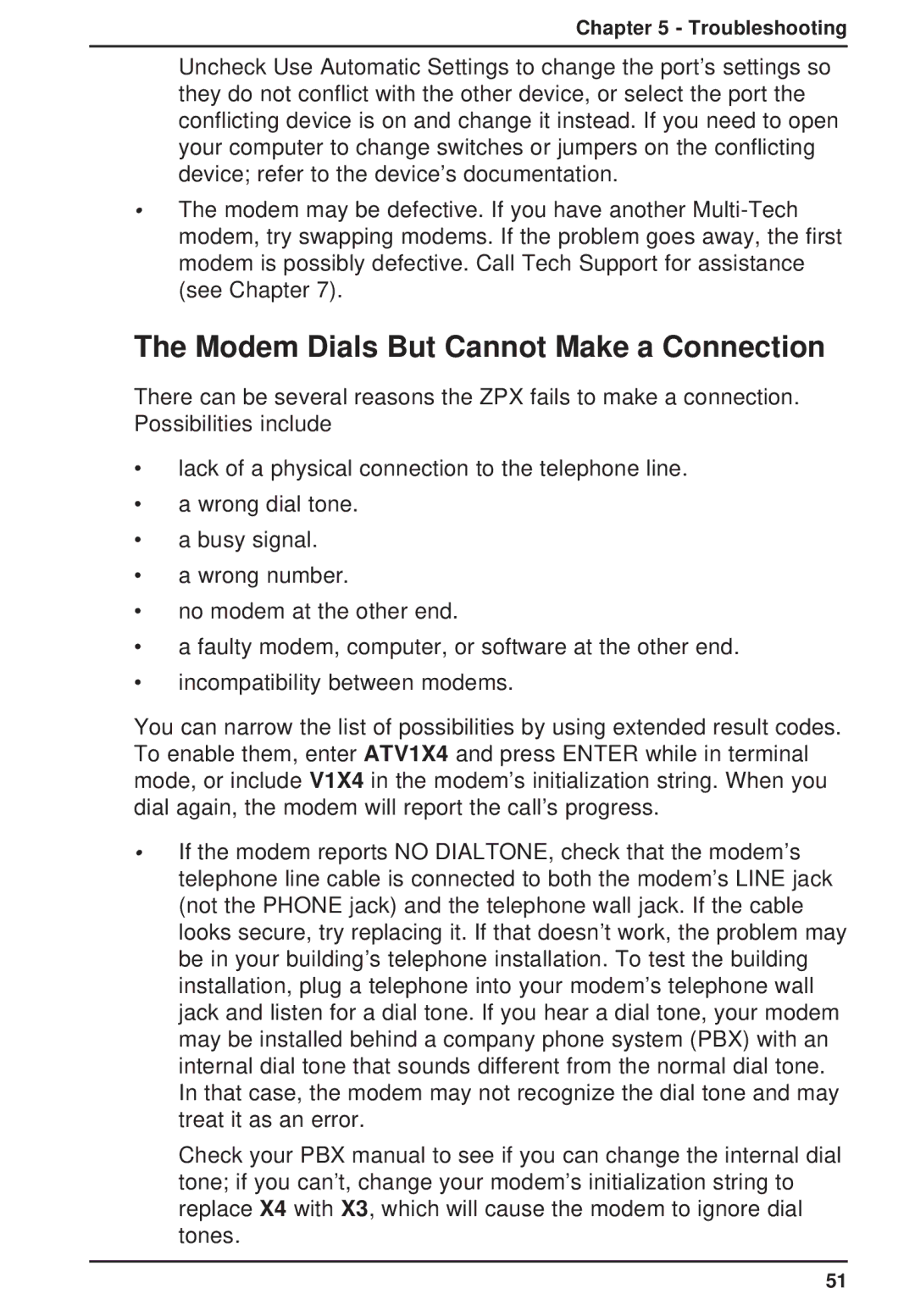
Chapter 5 - Troubleshooting
Uncheck Use Automatic Settings to change the port’s settings so they do not conflict with the other device, or select the port the conflicting device is on and change it instead. If you need to open your computer to change switches or jumpers on the conflicting device; refer to the device’s documentation.
•The modem may be defective. If you have another
The Modem Dials But Cannot Make a Connection
There can be several reasons the ZPX fails to make a connection. Possibilities include
•lack of a physical connection to the telephone line.
•a wrong dial tone.
•a busy signal.
•a wrong number.
•no modem at the other end.
•a faulty modem, computer, or software at the other end.
•incompatibility between modems.
You can narrow the list of possibilities by using extended result codes. To enable them, enter ATV1X4 and press ENTER while in terminal mode, or include V1X4 in the modem’s initialization string. When you dial again, the modem will report the call’s progress.
•If the modem reports NO DIALTONE, check that the modem’s telephone line cable is connected to both the modem’s LINE jack (not the PHONE jack) and the telephone wall jack. If the cable looks secure, try replacing it. If that doesn’t work, the problem may be in your building’s telephone installation. To test the building installation, plug a telephone into your modem’s telephone wall jack and listen for a dial tone. If you hear a dial tone, your modem may be installed behind a company phone system (PBX) with an internal dial tone that sounds different from the normal dial tone. In that case, the modem may not recognize the dial tone and may treat it as an error.
Check your PBX manual to see if you can change the internal dial tone; if you can’t, change your modem’s initialization string to replace X4 with X3, which will cause the modem to ignore dial tones.
51
